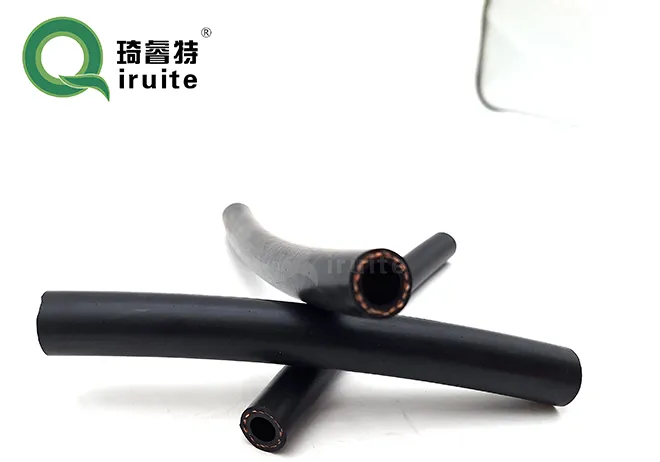Air Conditioning Hose and Pipe Essentials for Efficient Cooling Systems
Understanding Air Conditioner Hose Pipes A Comprehensive Guide
Air conditioning systems play a crucial role in maintaining comfortable indoor environments, especially during hot summer months. Among the various components that comprise an air conditioning unit, air conditioner hose pipes serve a significant function. In this article, we will explore the importance, types, maintenance tips, and common issues associated with air conditioner hose pipes.
The Importance of Air Conditioner Hose Pipes
Air conditioner hose pipes are vital for the effective operation of an air conditioning system. They are primarily responsible for the transportation of refrigerant between the indoor and outdoor units. The refrigerant is essential for heat exchange, allowing the air conditioning system to cool down indoor air. Without properly functioning hose pipes, the system may face inefficiencies, leading to poor cooling performance and higher energy bills.
These hoses are typically designed to handle high pressures and varying temperatures, ensuring the refrigerant moves smoothly throughout the system. They are usually made from materials that can withstand the necessary pressure, with a common choice being reinforced rubber or specialized thermoplastics.
Types of Air Conditioner Hose Pipes
1. Flexibility and Size Air conditioner hose pipes come in various sizes and shapes. Flexible hoses are commonly used in residential air conditioning systems, allowing for easier installation and routing. Rigid pipes, on the other hand, are sometimes employed in commercial systems where long distances between the indoor and outdoor units require sturdy materials.
2. Insulated vs. Non-Insulated Insulated hose pipes prevent heat transfer, maintaining the refrigerant’s temperature as it travels between units. Non-insulated pipes, while potentially cheaper, can lead to temperature loss and reduced efficiency, making insulation a critical feature for many air conditioning systems.
3. Single vs. Dual Hose Systems Some portable air conditioning units utilize a single hose system, pulling air from the room and exhausting it outside, while dual hose systems draw air from outside and exhaust inside air. Each system has its benefits, but dual hose systems typically offer better efficiency.
Maintenance of Air Conditioner Hose Pipes
Proper maintenance of air conditioner hose pipes is crucial to ensure that the air conditioning system operates efficiently
. Here are several tips for maintaining these pipesair conditioner hose pipe

- Regular Inspections Periodically check the hoses for signs of wear, such as cracks, fraying, or leaks. Early detection of problems can prevent larger issues and costly repairs.
- Keep It Clean Ensure that the hose pipes are free from debris and dirt. Dust accumulation can lead to blockages that impede airflow and efficiency.
- Check for Proper Insulation If your hose pipes are insulated, inspect the insulation for any damage. Good insulation helps keep the refrigerant at the right temperature and enhances the overall efficiency of the system.
- Pressure checks Regularly check refrigerant pressure levels using appropriate gauges. Low pressure could indicate leaks or blockages in the hose pipes.
Common Issues Associated with Air Conditioner Hose Pipes
1. Leaks One of the most common issues with air conditioner hose pipes is leaks. Leaks can occur due to wear and tear, often leading to a drop in refrigerant levels and reduced cooling efficiency. If you detect a loss of cooling power or hear hissing noises, it might indicate a leak.
2. Blockages Dust and debris can accumulate in hoses, leading to blockages. This obstruction can prevent the refrigerant from flowing properly, compromising the system's overall performance.
3. Kinking Over time, hose pipes can develop kinks that restrict refrigerant flow. This is especially common in flexible hoses that may have been improperly installed.
4. Pressure Inconsistencies Fluctuations in pressure can indicate underlying problems with the hose pipes or the overall air conditioning system. Monitoring pressure levels can help identify such issues early.
Conclusion
In conclusion, air conditioner hose pipes play a significant role in ensuring the efficient operation of air conditioning systems. Understanding their types, the importance of maintenance, and recognizing common issues can help users prolong the life and efficiency of their air conditioning units. Regular inspections and maintenance can save homeowners from costly repairs while ensuring a consistently comfortable indoor climate. As air conditioning systems continue to evolve, staying informed about their components is key to optimal performance.
-
Ultimate Spiral Protection for Hoses & CablesNewsJun.26,2025
-
The Ultimate Quick-Connect Solutions for Every NeedNewsJun.26,2025
-
SAE J1401 Brake Hose: Reliable Choice for Safe BrakingNewsJun.26,2025
-
Reliable J2064 A/C Hoses for Real-World Cooling NeedsNewsJun.26,2025
-
Heavy-Duty Sewer Jetting Hoses Built to LastNewsJun.26,2025
-
Fix Power Steering Tube Leaks Fast – Durable & Affordable SolutionNewsJun.26,2025

